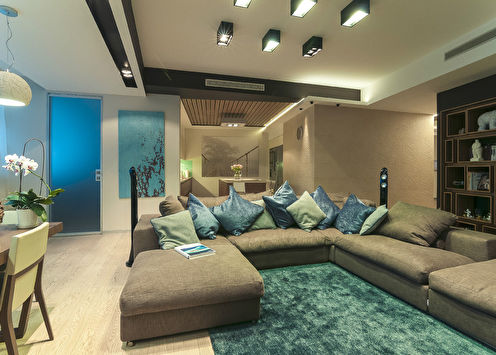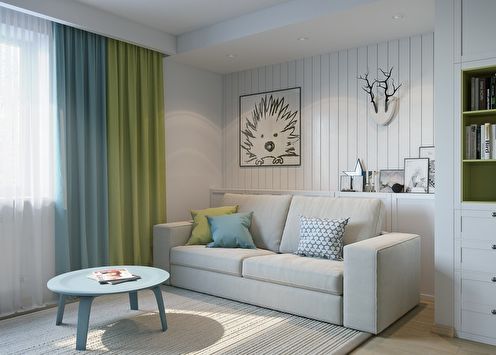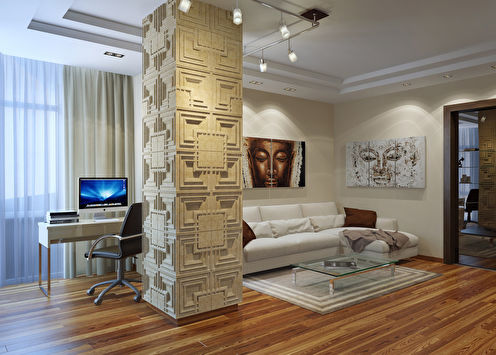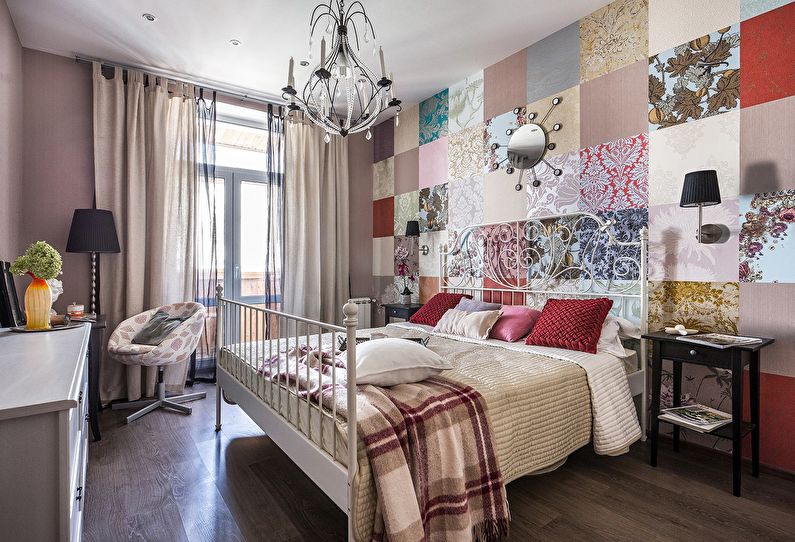
Wallpaper is one of the most popular ways to decorate the walls in the bedroom, but even the most beautiful textures can look dull or old-fashioned if you paste over the entire room. In modern design, it is customary to mix different options to make the interior unusual and stylish. In this article we will consider the basic rules for combining wallpaper in the bedroom, and numerous photos will serve as a good example.
How to combine wallpaper for the bedroom?
The bedroom is usually closed from prying eyes, so that when it is designed, the owners can completely rely on their intuition. In general, to create a cozy and relaxed atmosphere, restrained tones and patterns are the best solution.
The choice of wallpaper largely depends on the preferred direction of design. For example, silk-screen printing in the form of rhombuses, royal lilies, curls that are a tone lighter or darker than the background is suitable for the classics; in Provence one cannot do without pastel shades and small flowers; Graphic lines and achromatic colors beautifully complement the modern style.
Plain wallpaper, it is desirable to choose adjacent colors with the same saturation, or of the same color, but of different brightness (delicate pink and raspberry, transparent blue and dark blue).
As for the prints, they should be approximately the same size and be printed with the same palette of colors. Thin strips should be placed next to small drawings, and large details should be emphasized with wide empty inserts. It is very important not to overload the interior with mixed finishes: the smaller the room area, the more modest the ornament should be and the softer the palette.
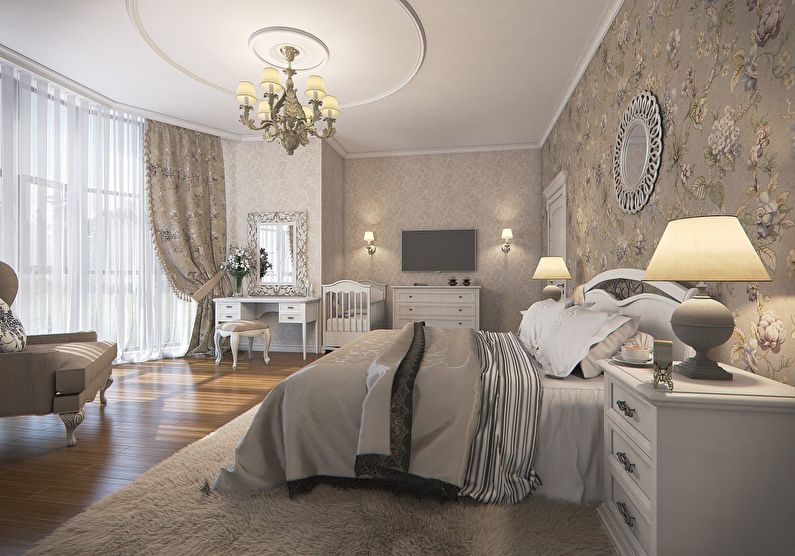
What are companion wallpapers?
Creating wallpaper-duet, manufacturers went to meet the growing consumer demand for beautifully matching colors. While products of different brands often do not match the type of base, and the same shade may look completely different, collection sets have an ideal color harmony, repeated (sometimes with minimal differences) prints, and most importantly, they are identical in physical characteristics such as density, smoothness, thickness and resistance to fading in the sun.
Due to these advantages, companion wallpapers will always be the key to a successful design and it is not necessary to delve into the intricacies of the design before choosing them.
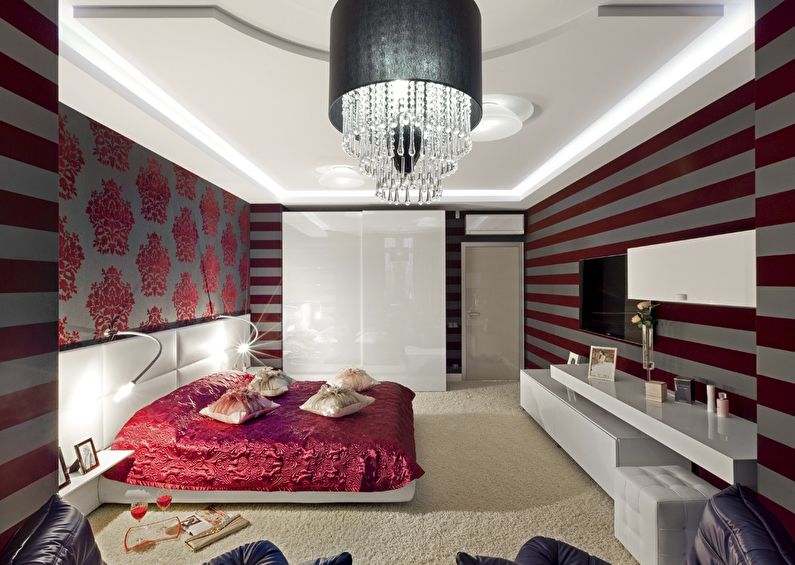
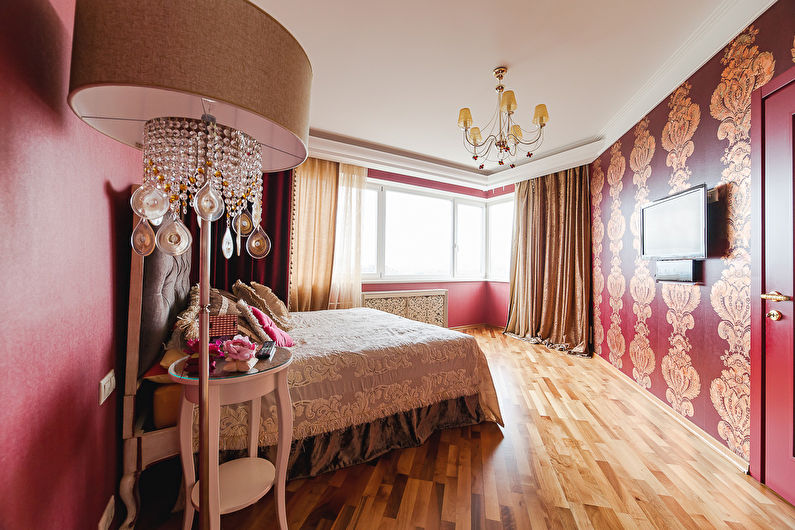
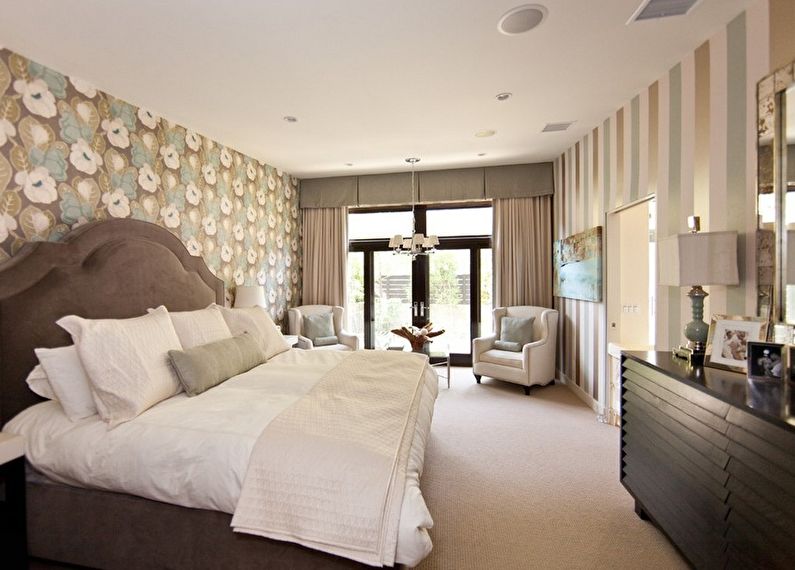
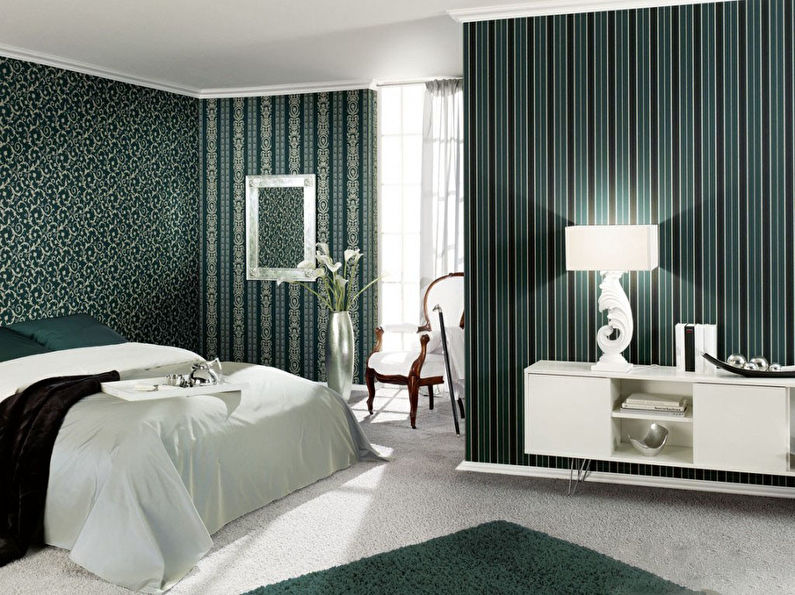

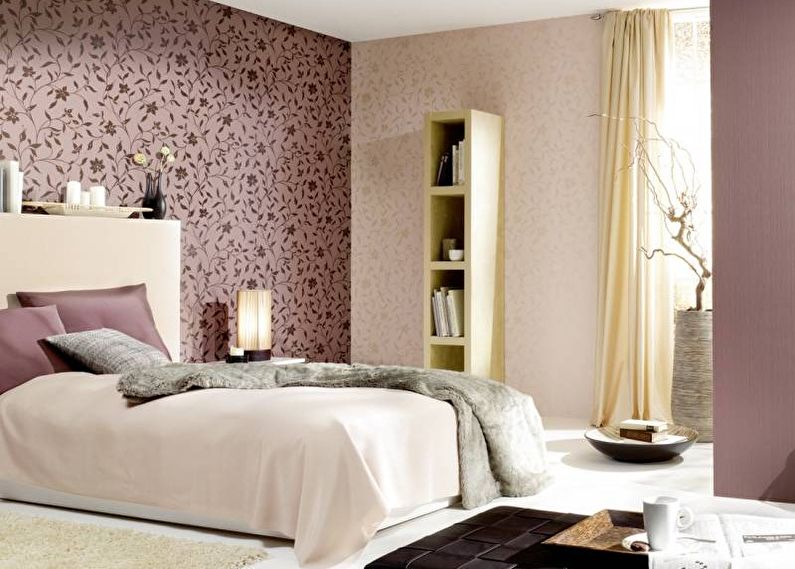
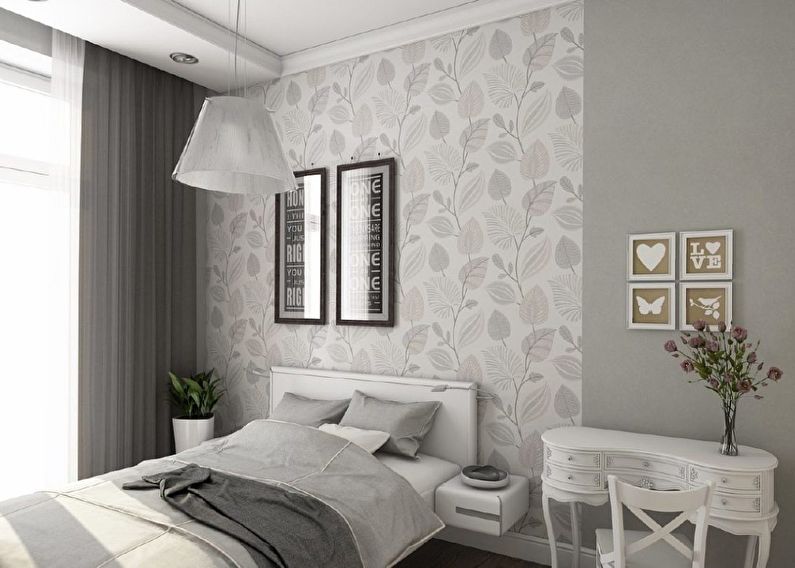
Wall panels and niches
In the classic interior, the walls are often decorated with large frames of plaster, wooden, plastic or polyurethane baguettes. This is how panels are formed, inside which wallpapers with an interesting pattern and expensive texture look charming.
The technology for creating them is quite simple - on a plain or lighter background, one or several large inserts are placed, which are closed at the edges by a slightly protruding narrow border. Such a noticeable detail of the interior allows you to focus on the area where it is located: highlight the head of the bed, emphasize family photos, paintings, draw a look to the luxurious crystal sconces.
A similar effect is achieved with the help of drywall niches trimmed with contrasting wallpaper. In addition, in the recess you can place a plasma TV, your favorite collection of figurines, books or indoor plants.
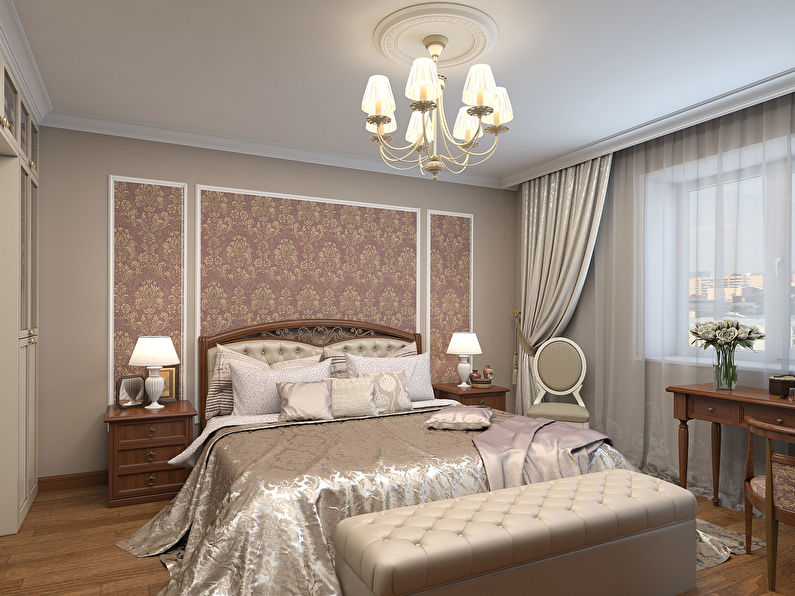
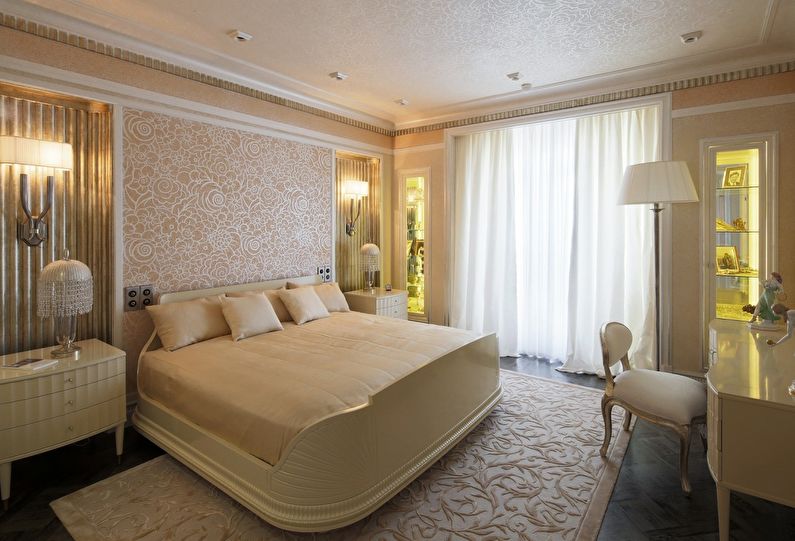
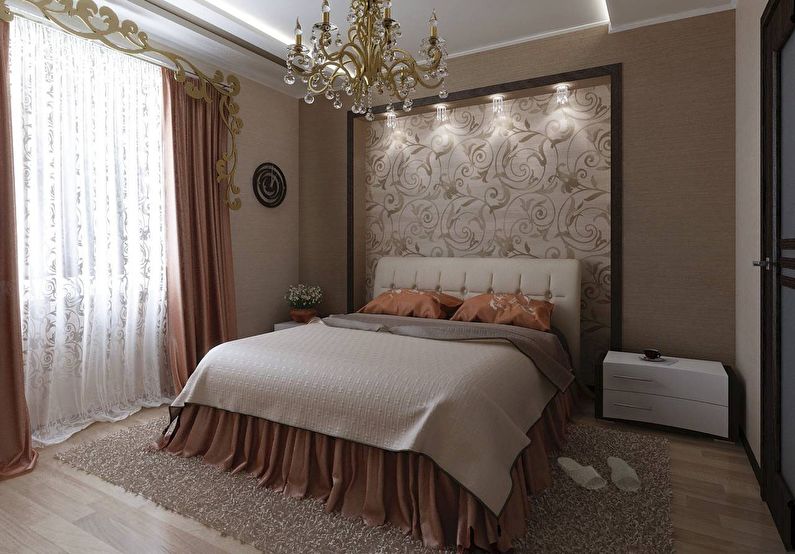
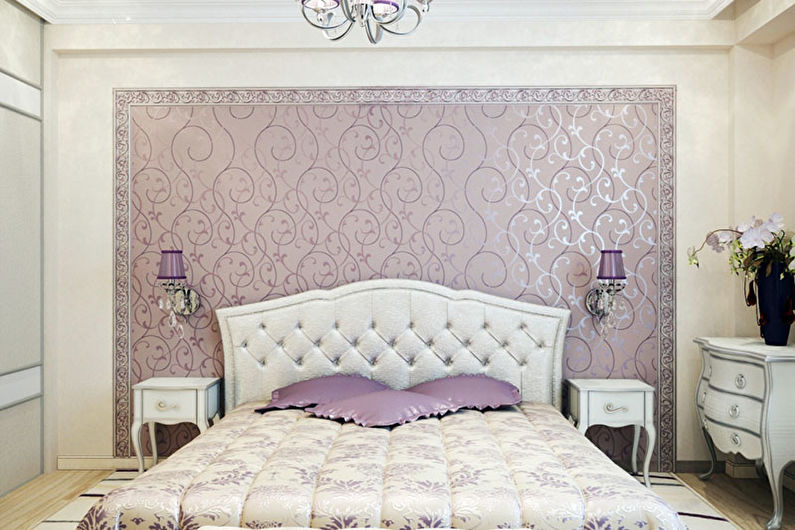

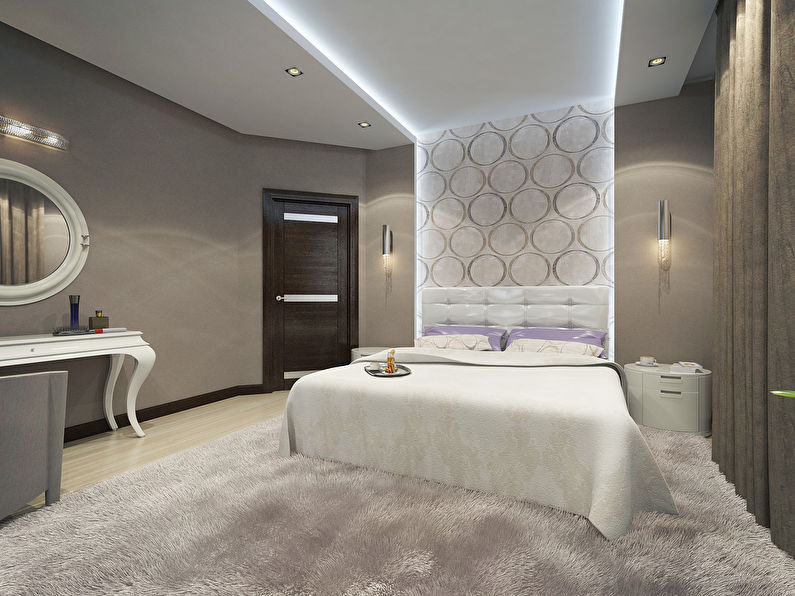
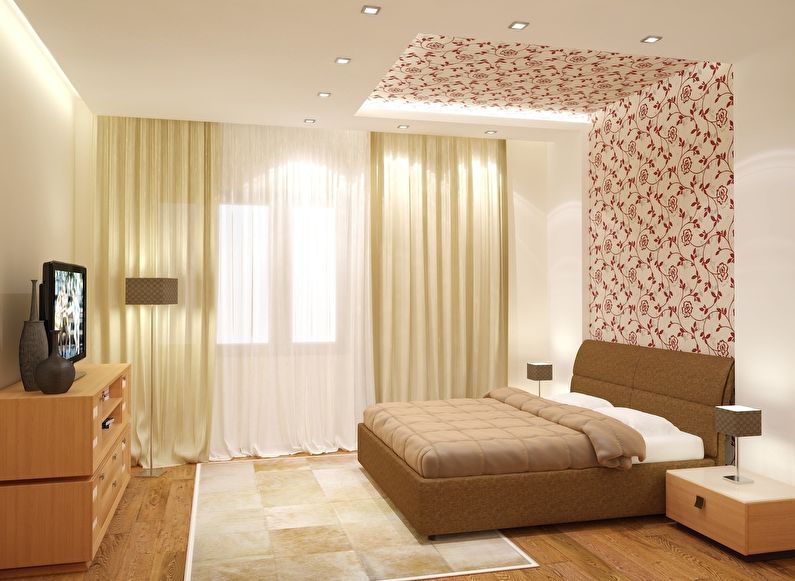
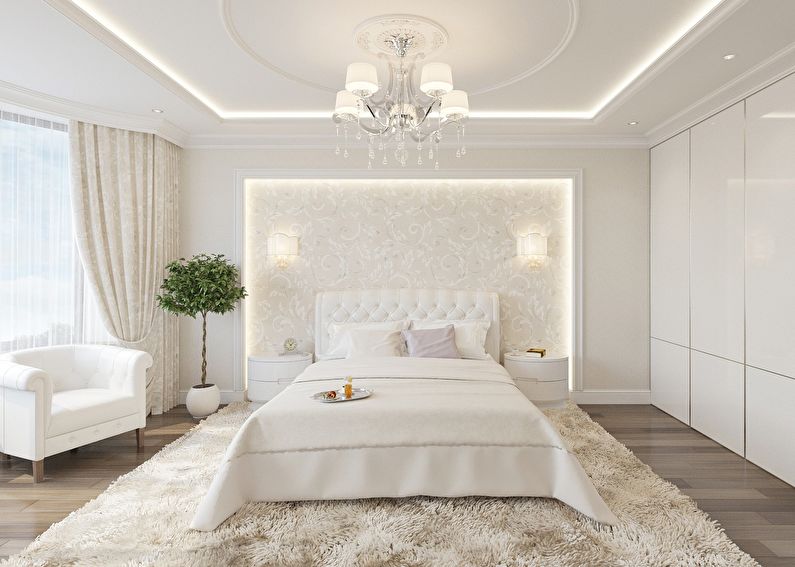
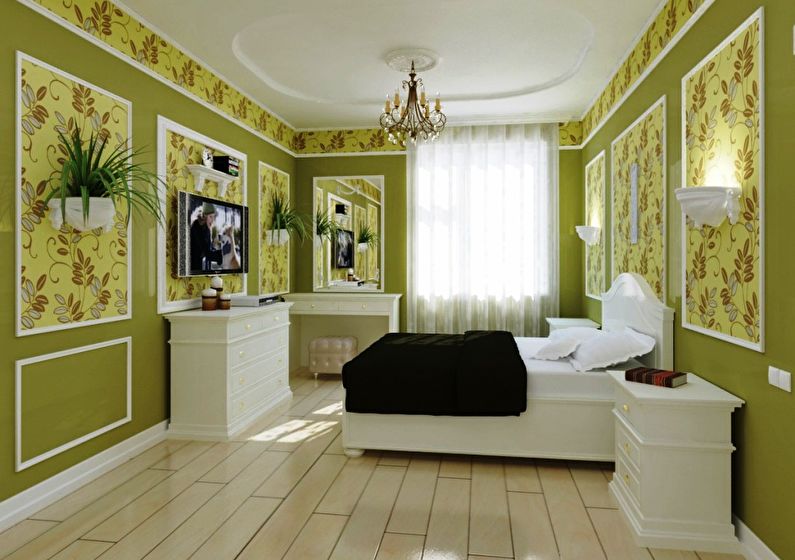
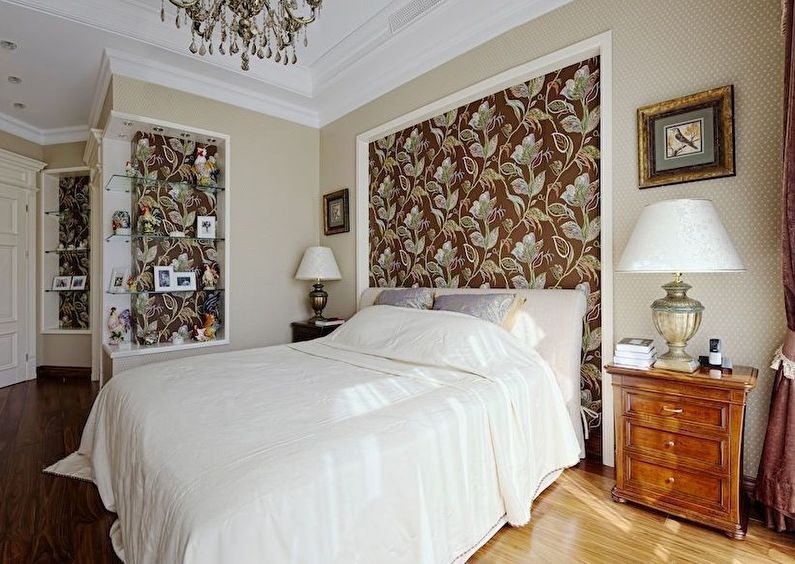
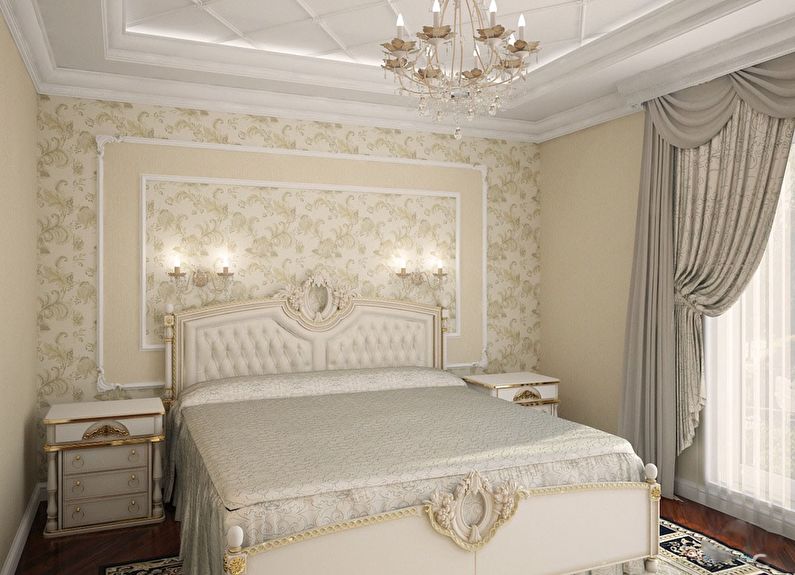
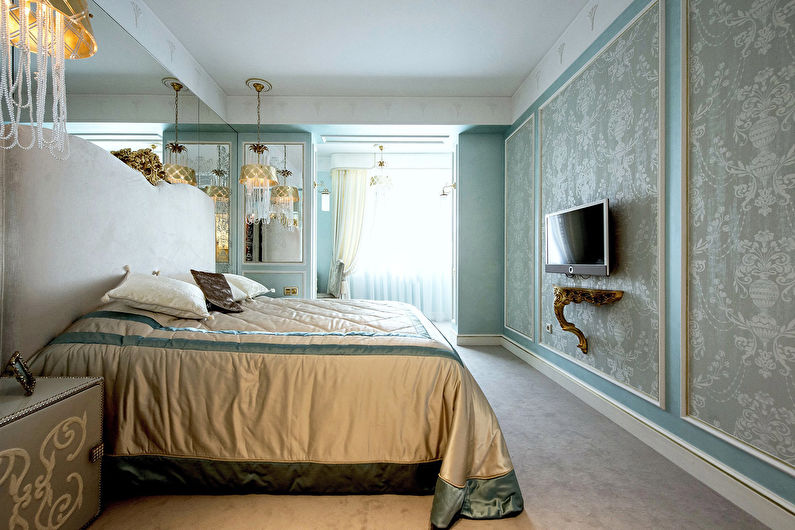
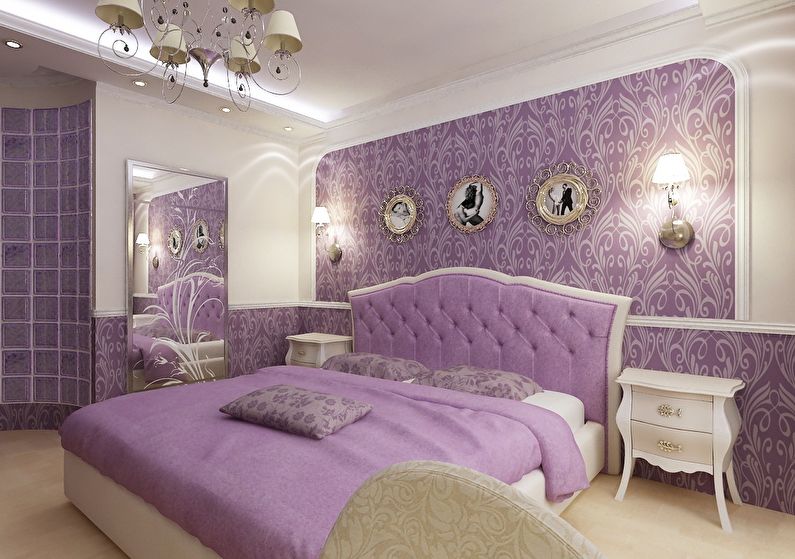
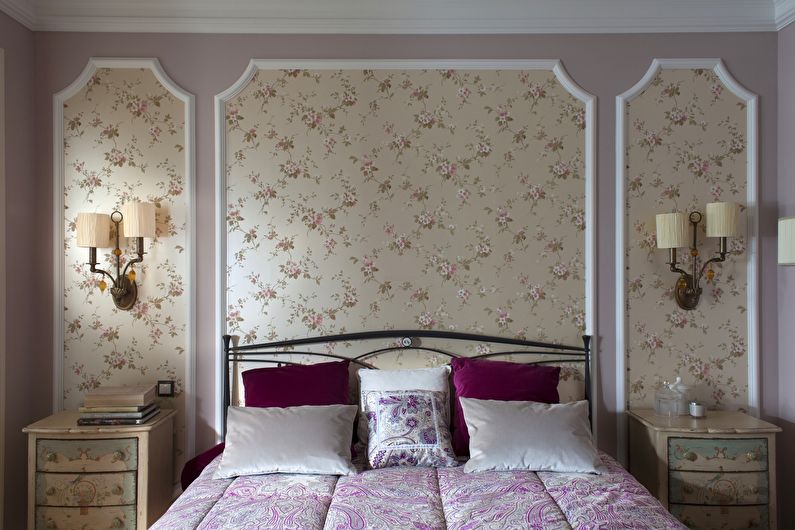
Vertical combination of wallpaper in the bedroom
Traditionally, wallpapering is carried out from top to bottom, so vertical combination is the easiest way to diversify the design of the bedroom, which even a person will cope without much experience in doing DIY repairs.
Here you do not need to take measurements and cut out fragments, as is the case with inserts or niches - just alternate the rolls in the desired order, carefully working out the joints.
The advantage of this type of finish is the visual extension of the height of the room and clear zoning of the room. In addition, the vertical lines make the bedroom interior more balanced, balancing the wide horizontal bed.
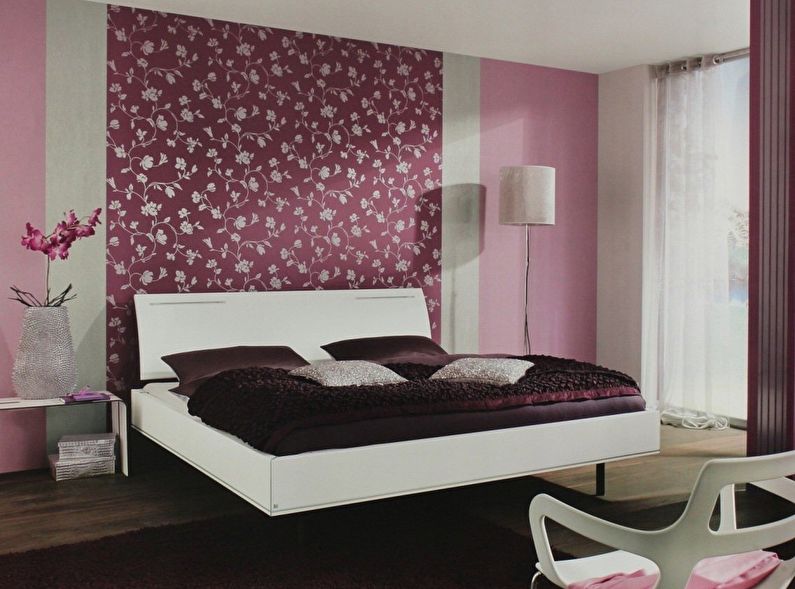
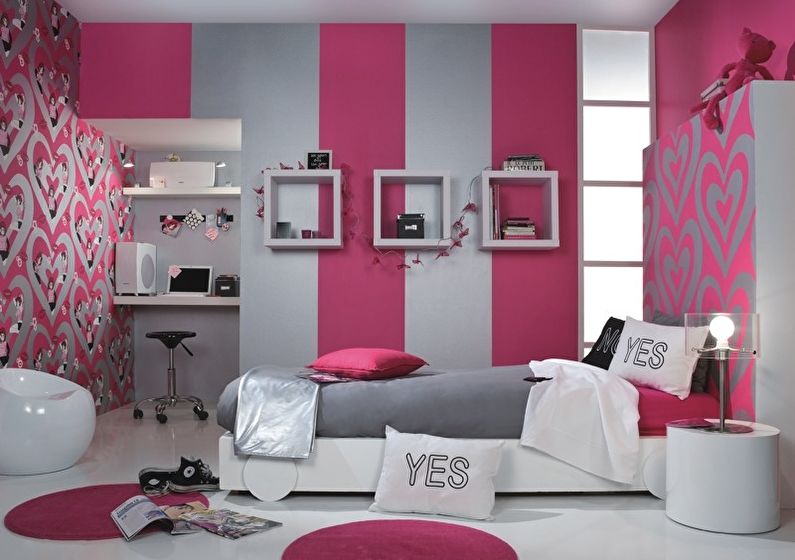

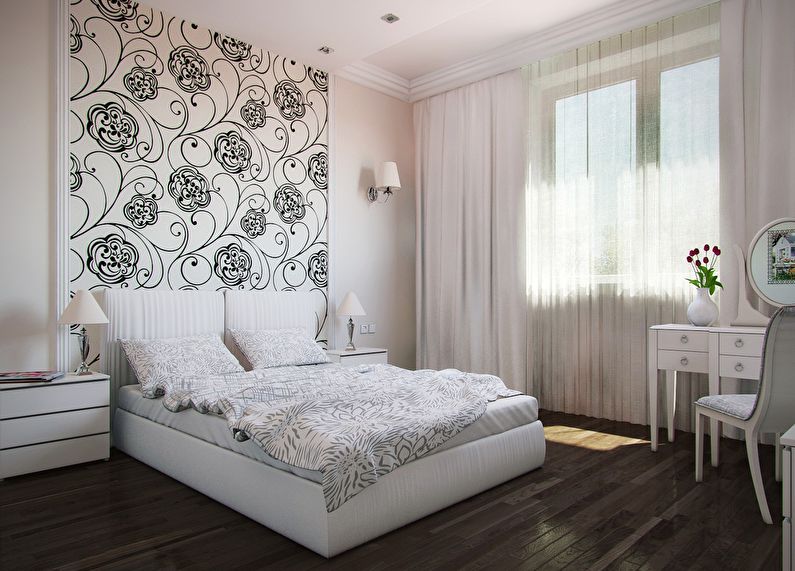
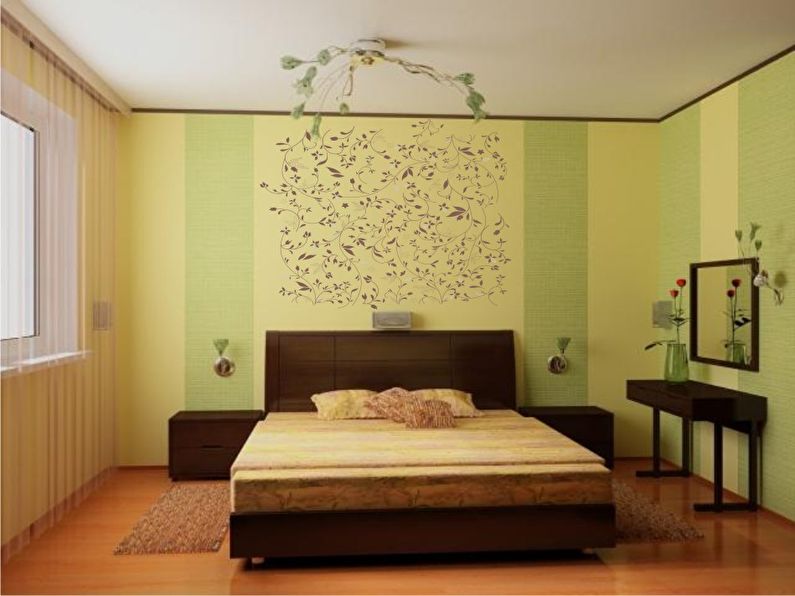

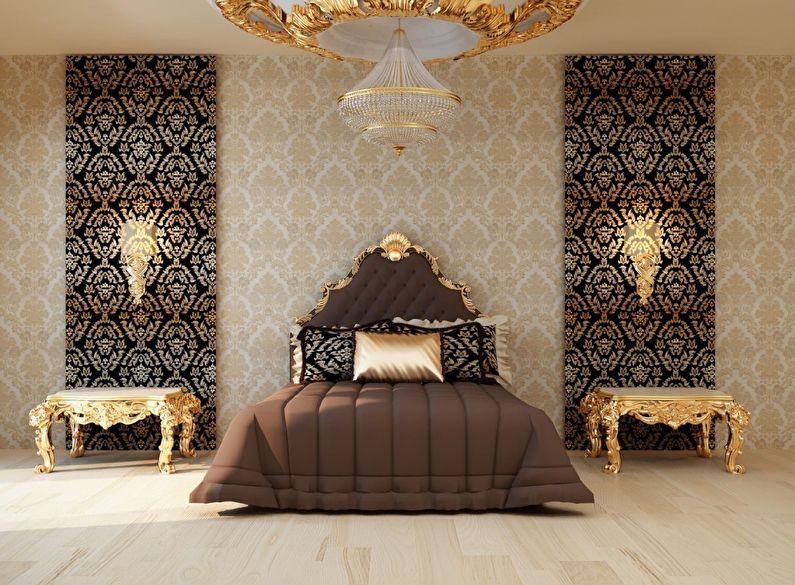
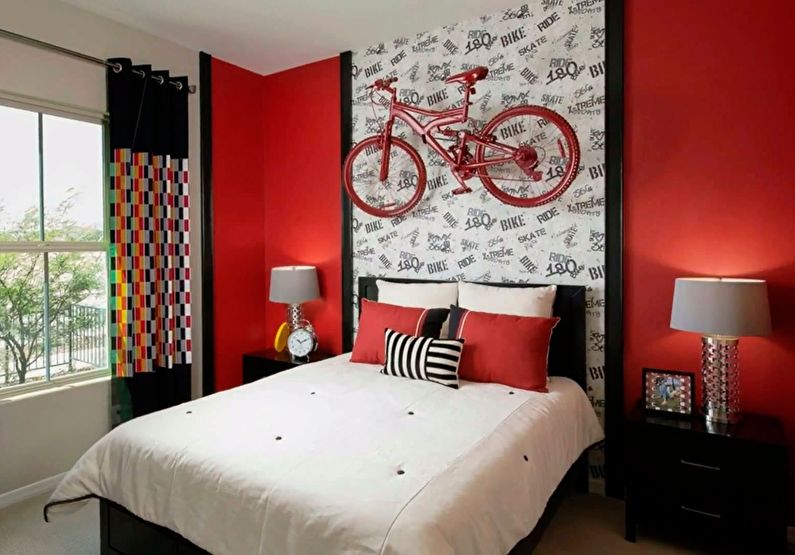
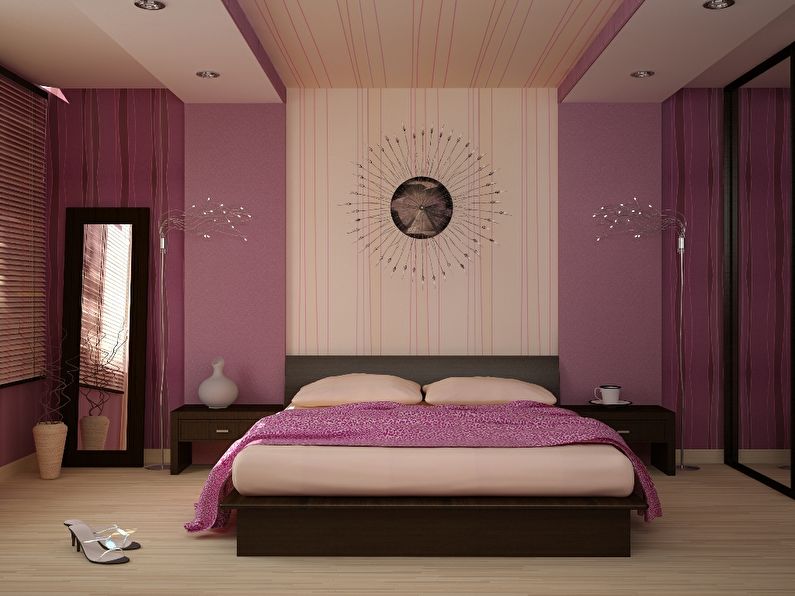

Horizontal combination of wallpaper in the bedroom
The main function of horizontal lines is the visual expansion of space. This technique is indispensable if you want to enlarge a narrow wall in a rectangular room or give more volume to a recess in the attic.
As a rule, the distinction between wallpaper is made at a height of 1/3 of the floor. In this case, the bottom can imitate denser panels, the top is filled with a plain texture or discreet pattern. If the bedroom does not have a very high ceiling height, then the upper horizontal is better to supplement with wallpaper with a vertical pattern.
To connect the two types of coatings, a border is glued between them. This can be a strip, at the same time contrasting and combining elements from the lower and upper rolls, as well as just a thin plinth of suitable material.

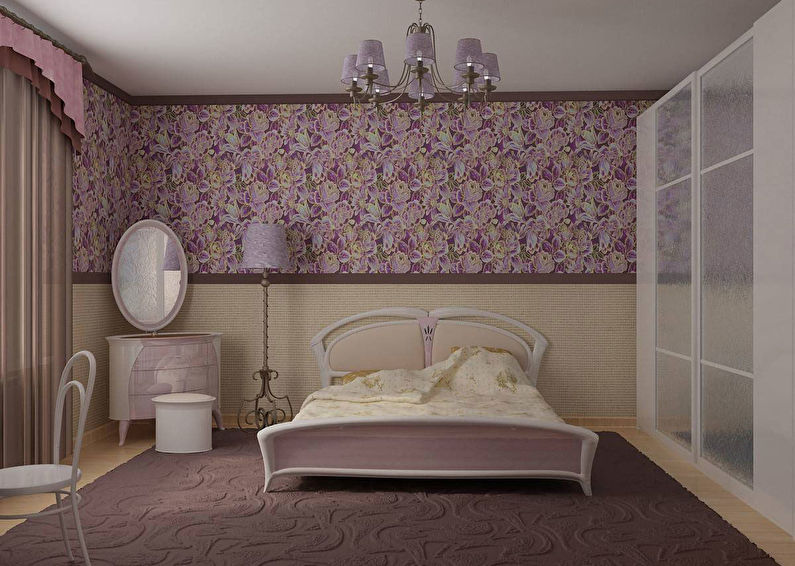

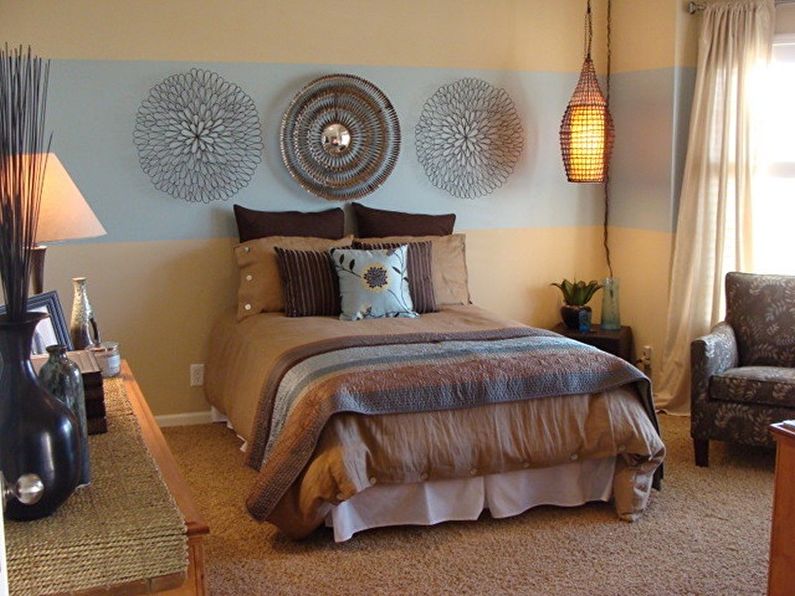


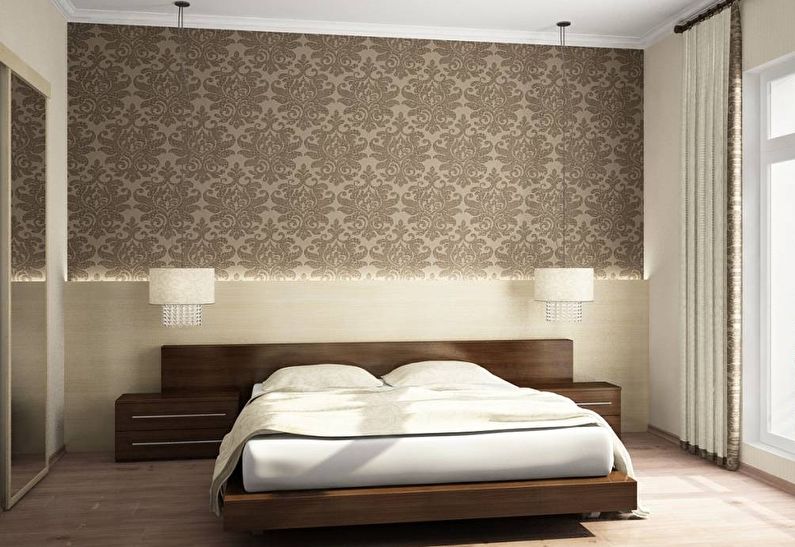
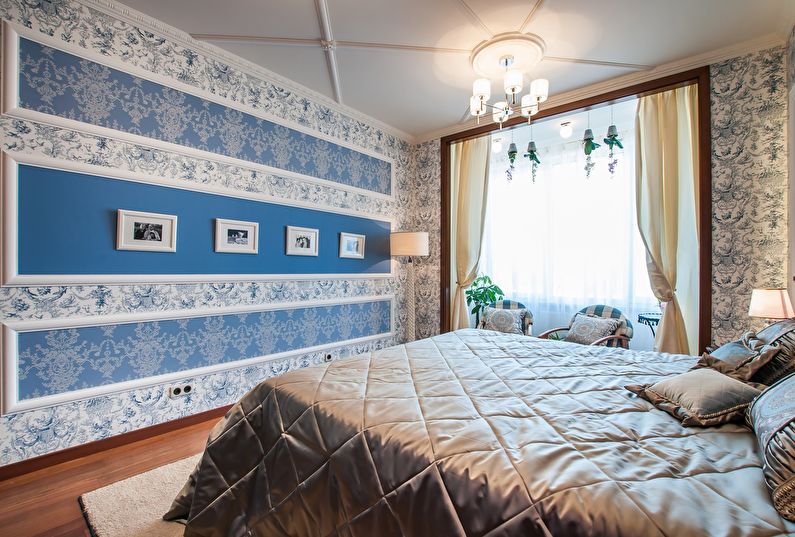


How to combine wallpaper and photo wallpaper in the bedroom
Thanks to the high quality of printing, modern photo wallpapers look unusually realistic. This is a wonderful find for the visual enlargement of small rooms - the perspective that opens to the eye, the beautiful play of light and the three-dimensional effect seem to move the wall away, creating the depth of space. Best of all, a wallpaper with a picture of a panorama or landscape will cope with this task.
Wall murals with floral arrangements and other 2D drawings can be placed in a graceful frame or simply pasted next to a plain wallpaper, harmonizing in color.
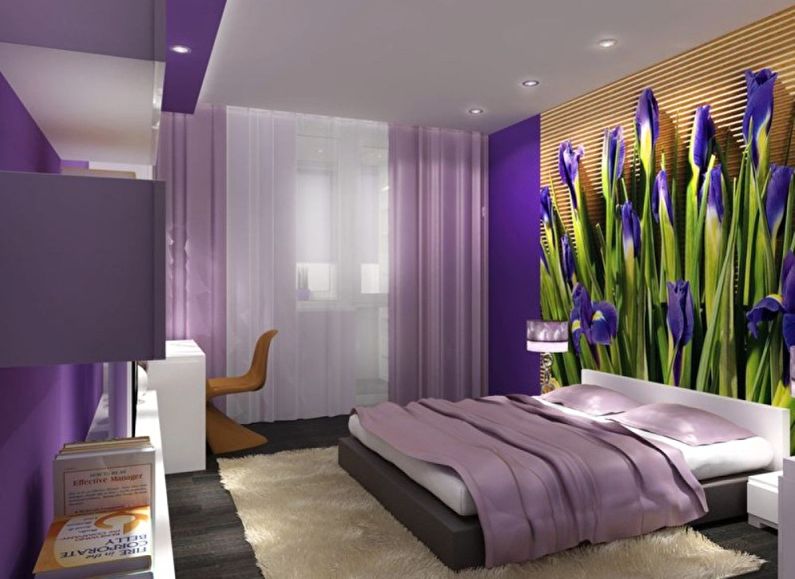
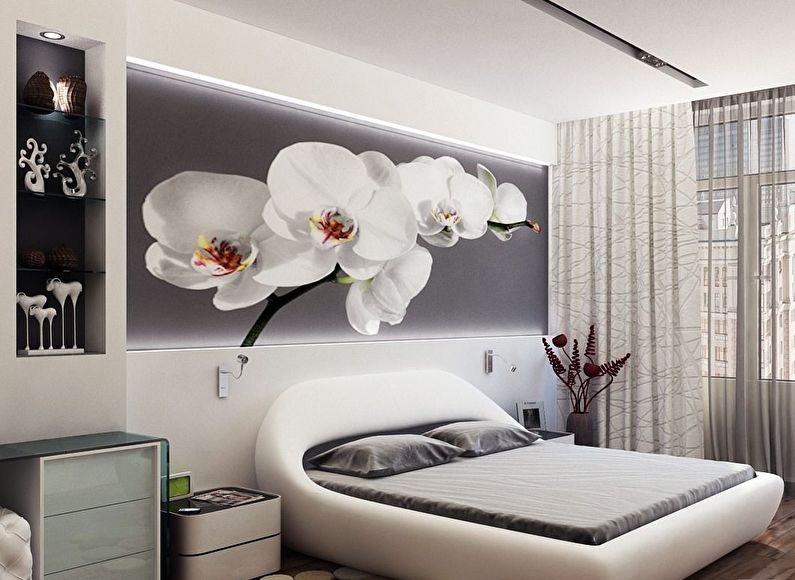
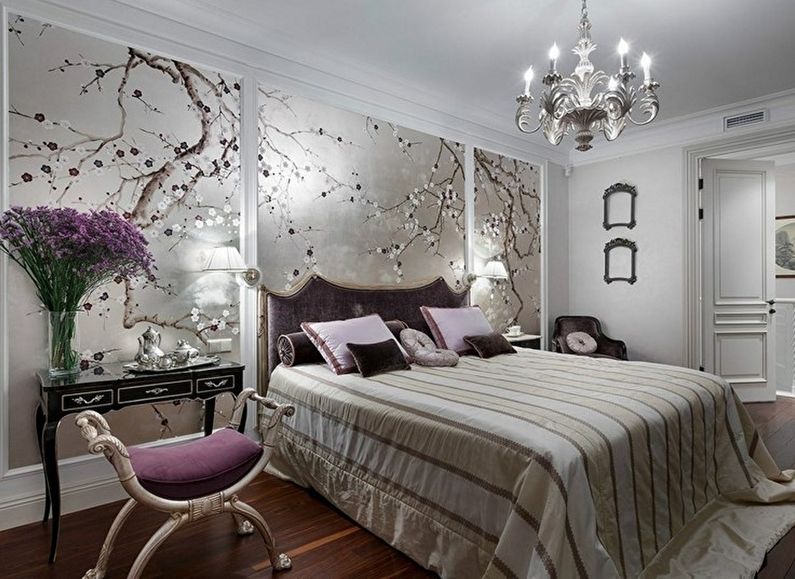
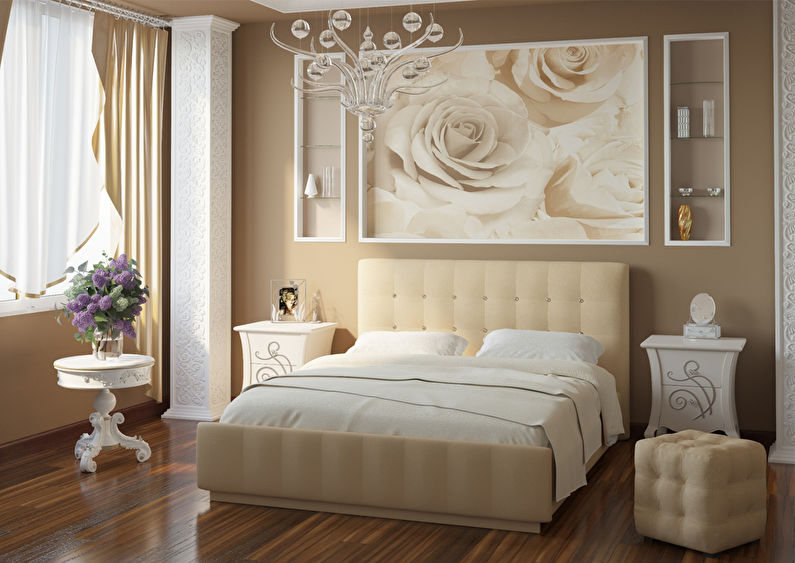
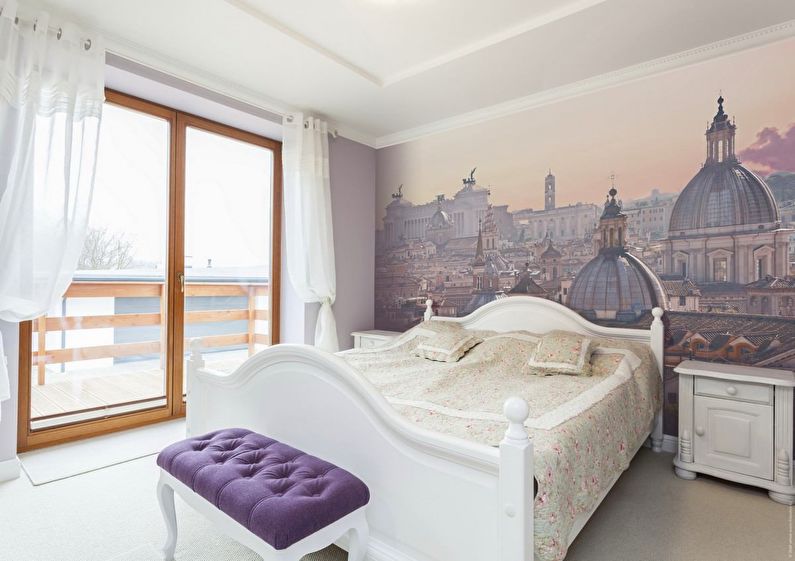
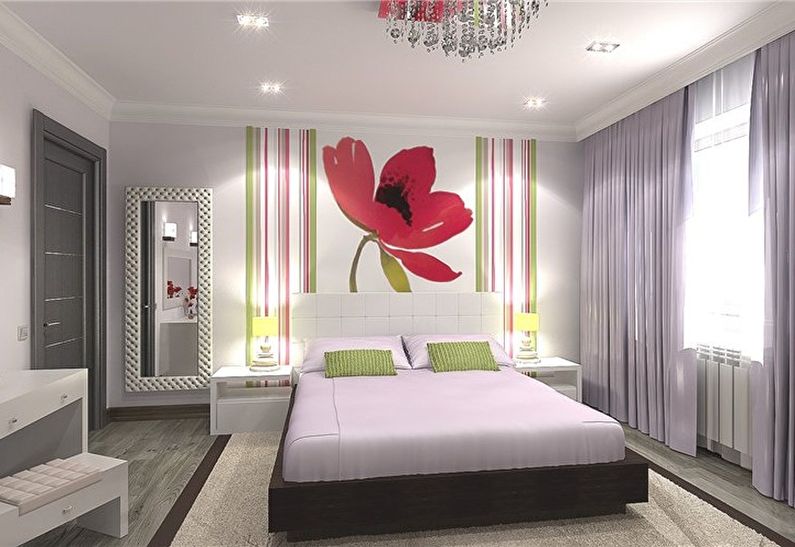
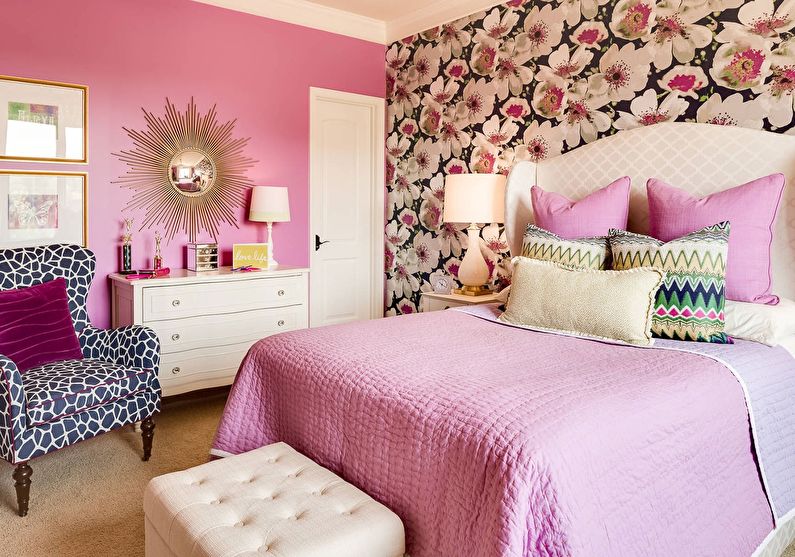
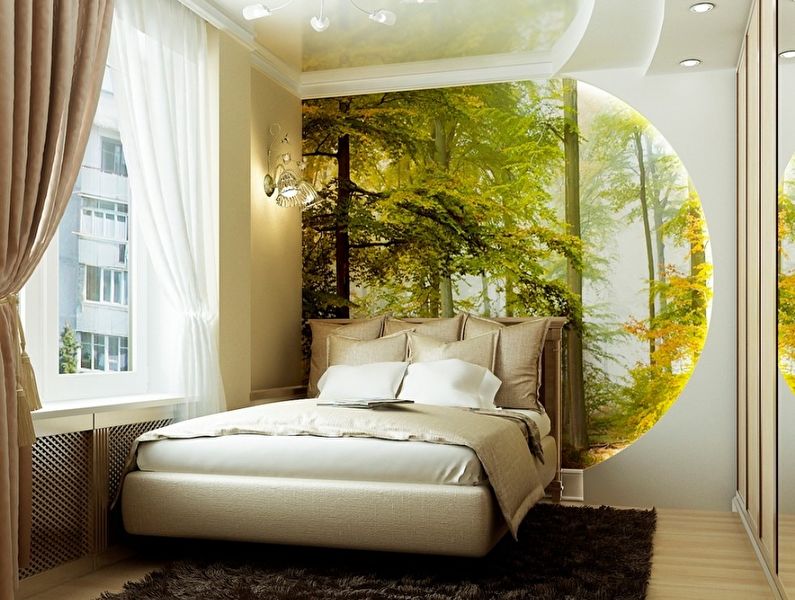
Video: Combining wallpaper options for walls
